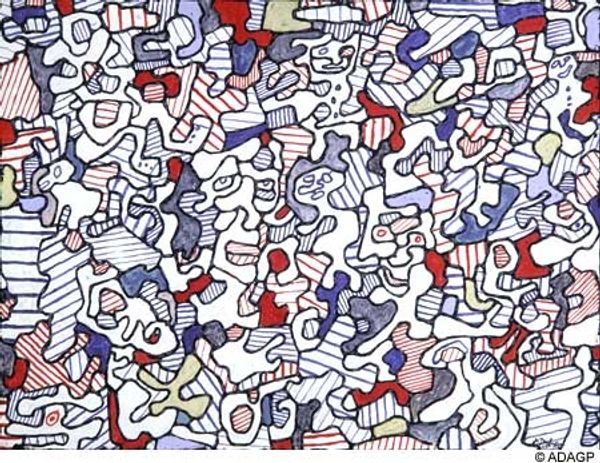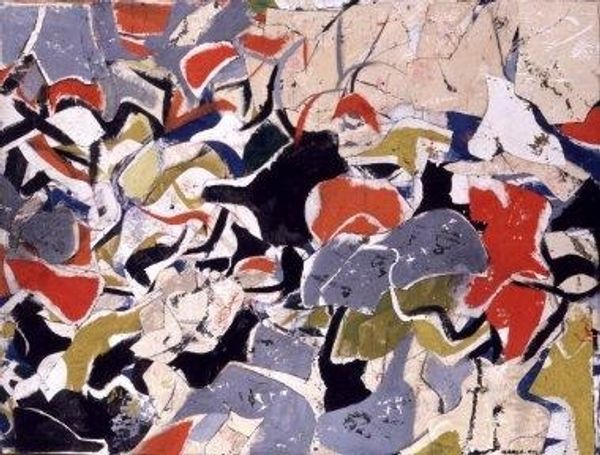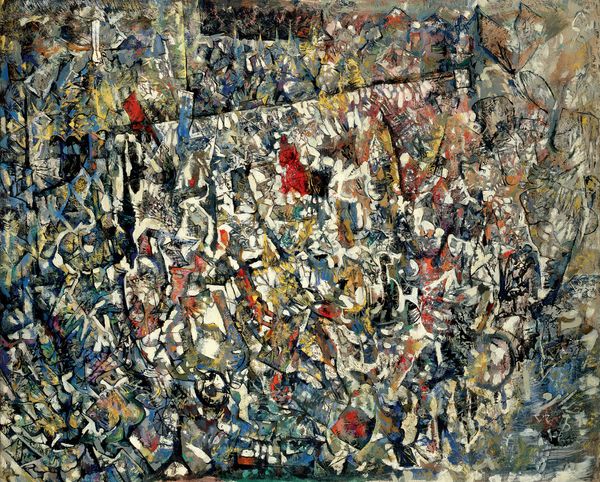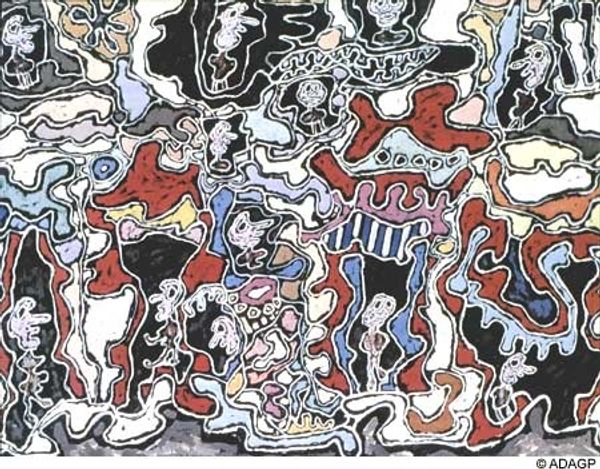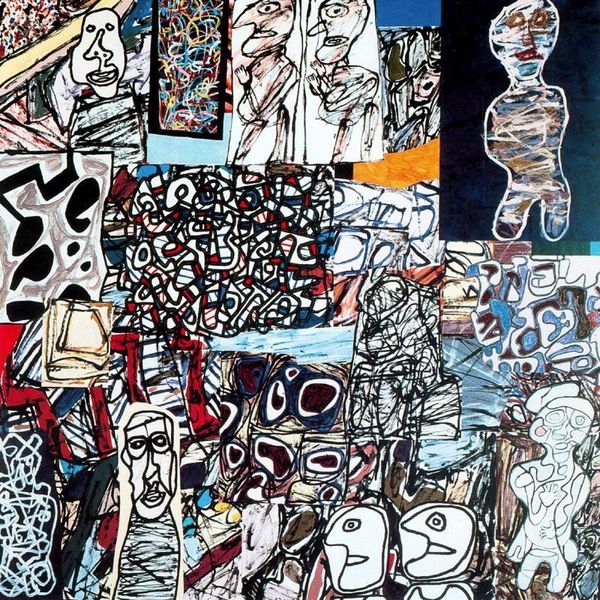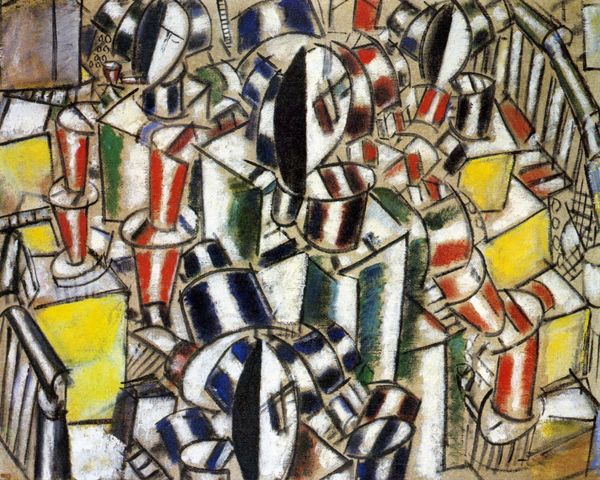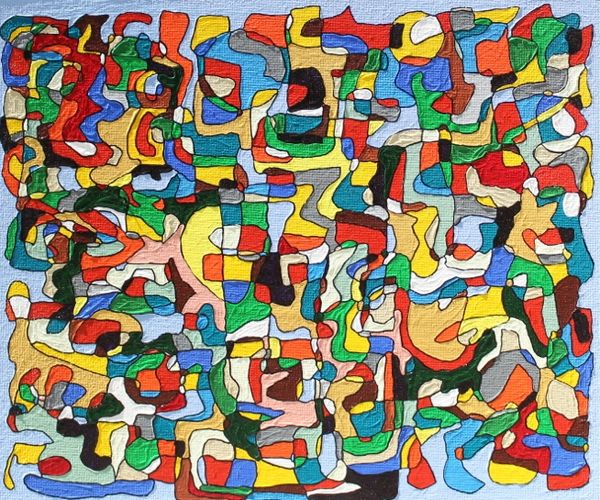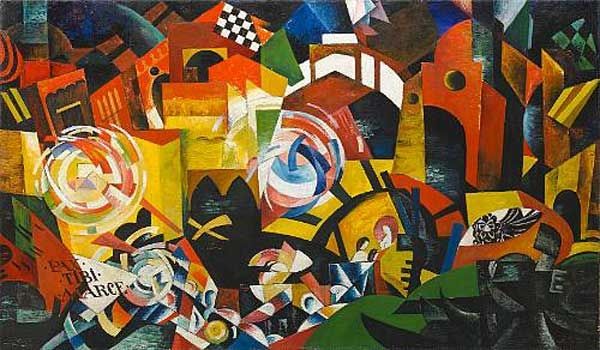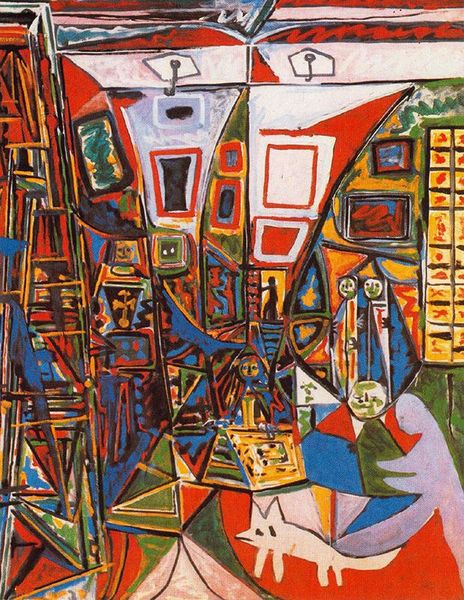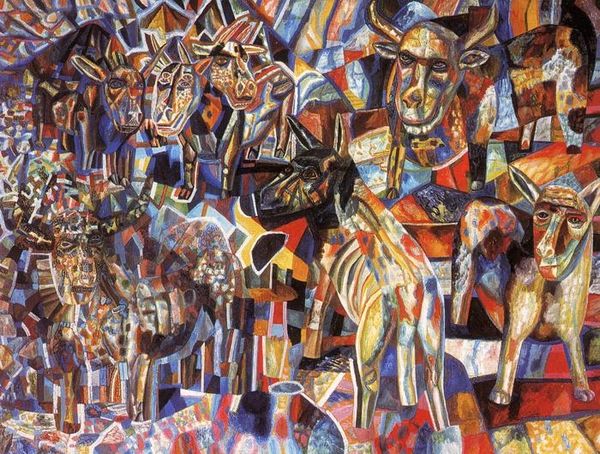
mixed-media, painting, mixed-media
#
pattern heavy
#
mixed-media
#
random pattern
#
repeated pattern
#
loose pattern
#
painting
#
pattern
#
pattern
#
abstract pattern
#
organic pattern
#
geometric
#
mixed-media
#
pattern repetition
#
layered pattern
#
funky pattern
Copyright: Jean Dubuffet,Fair Use
Curator: Here we have Jean Dubuffet's "l'Hourloupe" created in 1966. This painting uses mixed media, layering shape and line to achieve an intricate effect. Editor: Wow, my first thought is that this makes my brain itch in a good way, you know? It's chaotic but there’s also this very disciplined rhythm going on. Like a beautifully overgrown garden, all swirling with stories. Curator: That sensation resonates deeply with the work's title, "l'Hourloupe", a made-up word by Dubuffet that suggests something grotesque or hallucinatory. We can look at this piece through the lens of post-war trauma. This pattern, repeated almost obsessively, could represent the fractured state of society, trying to find form after immense disruption. Editor: Obsessively, yes, totally, it does feel almost manic. Did something specific trigger this? It seems almost like an artifact of the subconscious trying to resolve something, like seeing faces in clouds. It gives me that unsettling but compelling vibe. Curator: Well, we see his "Hourloupe" series as a direct response to what he called 'high culture'. Dubuffet found more authenticity in the art of everyday life, especially the art of the mentally ill and the untrained—what he famously called "Art Brut." His perspective challenges established art hierarchies. Editor: Brut indeed. So much energy, almost vibrating off the surface. It’s funny; at first glance it just seems like this pattern but after spending a few moments here, you find there is definitely a kind of weird, wonderful harmony pulling all the bits and pieces together into a satisfying, albeit eccentric, whole. Curator: Exactly. It challenges us to rethink notions of beauty, order, and who gets to define those terms in the first place. Looking at this piece compels one to question aesthetic assumptions and the social structures that uphold them. Editor: I am definitely seeing my ordinary, every-day chaos differently. So, what did Dubuffet ultimately want us to take from this visual riot, do you suppose? Curator: The series suggests a reimagining of our relationship to the world. It is about perception, the endless possibilities of transformation. It encourages viewers to confront uncomfortable truths about our culture and society. Editor: Absolutely. For me, I will walk away contemplating just how disorder can lead to another form of order, where it turns strange and somehow liberating!
Comments
No comments
Be the first to comment and join the conversation on the ultimate creative platform.
